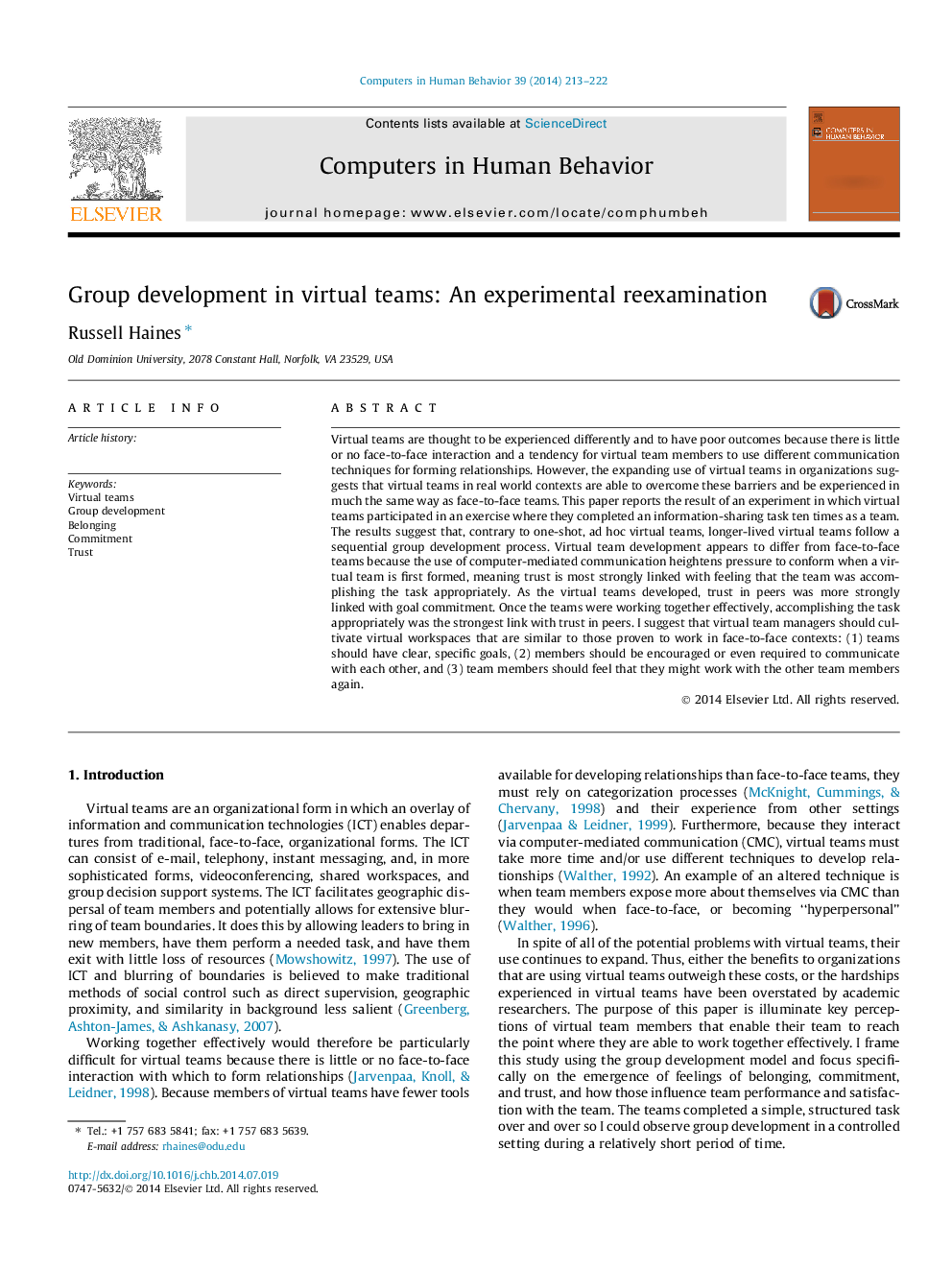| Article ID | Journal | Published Year | Pages | File Type |
|---|---|---|---|---|
| 6838821 | Computers in Human Behavior | 2014 | 10 Pages |
Abstract
Virtual teams are thought to be experienced differently and to have poor outcomes because there is little or no face-to-face interaction and a tendency for virtual team members to use different communication techniques for forming relationships. However, the expanding use of virtual teams in organizations suggests that virtual teams in real world contexts are able to overcome these barriers and be experienced in much the same way as face-to-face teams. This paper reports the result of an experiment in which virtual teams participated in an exercise where they completed an information-sharing task ten times as a team. The results suggest that, contrary to one-shot, ad hoc virtual teams, longer-lived virtual teams follow a sequential group development process. Virtual team development appears to differ from face-to-face teams because the use of computer-mediated communication heightens pressure to conform when a virtual team is first formed, meaning trust is most strongly linked with feeling that the team was accomplishing the task appropriately. As the virtual teams developed, trust in peers was more strongly linked with goal commitment. Once the teams were working together effectively, accomplishing the task appropriately was the strongest link with trust in peers. I suggest that virtual team managers should cultivate virtual workspaces that are similar to those proven to work in face-to-face contexts: (1) teams should have clear, specific goals, (2) members should be encouraged or even required to communicate with each other, and (3) team members should feel that they might work with the other team members again.
Related Topics
Physical Sciences and Engineering
Computer Science
Computer Science Applications
Authors
Russell Haines,
